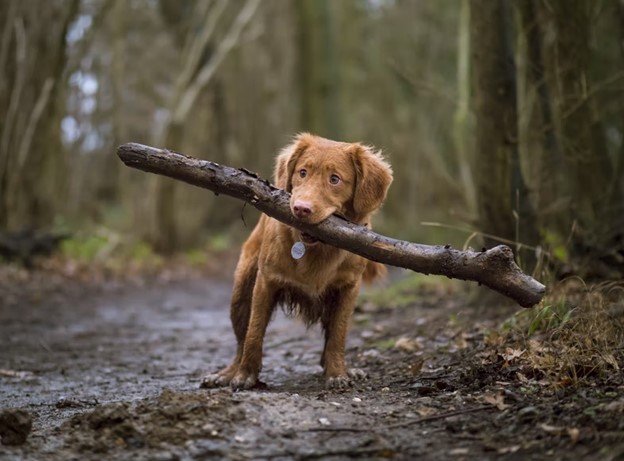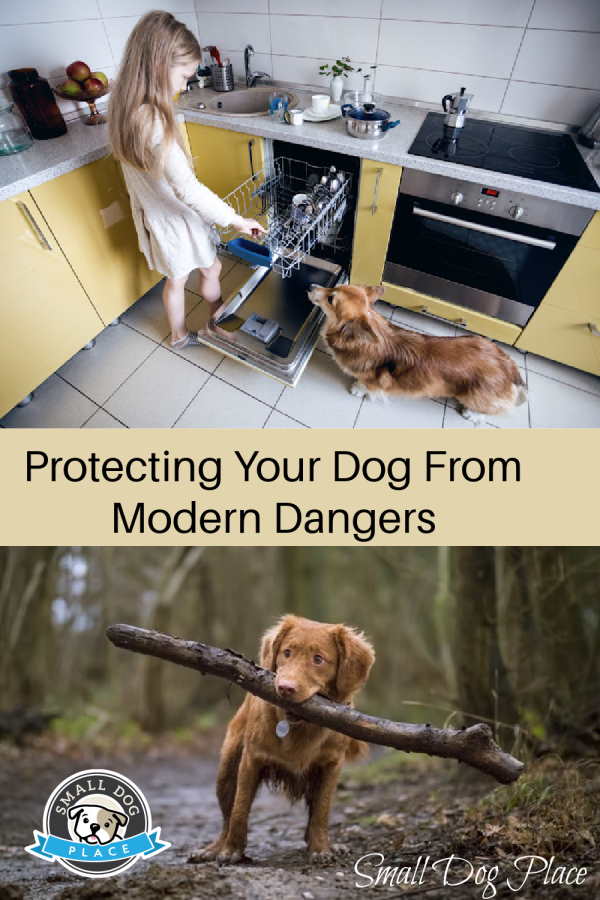- Small Dog Place Home
- Safety
- Protecting Your Dog
Modern Life Considerations for Protecting Your Dog
Protecting Your Dog |By Frankie Wallace Published 04/30/2022
Dogs lived up to their billing as “man's best friend” during the pandemic. Research shows that folks who had dogs “were significantly less depressed” than people who didn’t have a dog during the COVID-19 pandemic, and were able to improve their overall resiliency during a difficult time.
This is important, as it shows that despite advancements in tech and changes to our lifestyle, we all still appreciate a good cuddle and snuggle from a furry friend.
Protecting Your Dog
Before jumping into dog ownership, prospective owners must understand the responsibilities associated with having a dog. In particular, new owners must understand how they can protect their dogs from the dangers of modern life.
Car Safety
Now that social distancing has been eased, we’re all allowed to go out and explore new places. For many folks, this may be the first time they’ve taken their dog out in the car. While that idea is exciting, it is also important that you take safety precautions before you head out.
There are several ways to ensure your car is dog-friendly. However, you absolutely must have restraints like cages and pet-proof barriers. This might sound like an unnecessary precaution, but, according to the AAA National Traffic Safety Programs, “An unrestrained 10-pound dog in a crash at 50 mph will exert roughly 500 pounds of pressure.” Restraining your dog helps you focus on the road and keeps you both safe during an accident.
It’s also worth noting that not all cars are conducive to dog ownership. Nowadays, you can search for cars that have been crash-tested for dogs. Additionally, you can choose cars with tougher, more durable interior fabrics to ensure your canine pal doesn’t tear up the leather upholstery.
Finally, always remember to keep a window open if you plan to leave your dog in the car in warm conditions — better yet, don’t leave them alone in the car at all.
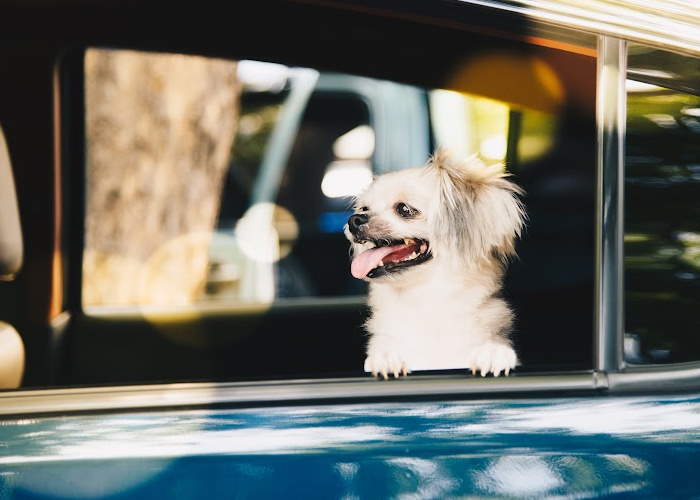 In photos, a dog riding in a car with an open window is cute but not safe.
In photos, a dog riding in a car with an open window is cute but not safe.Protecting Your Dog: Fire Proofing
Modern houses are filled with fire hazards. Cords run amok in almost every room and devices which are plugged into sockets present a real fire-safety risk. Before you get a dog, you need to make a serious assessment of your home, and fireproof every room to avoid disaster.
This is particularly important, as 40,000 pets die every year in house fires, and estimates suggest that 1,000 house fires are caused by pets. You can pet-proof your home by insulating any exposed wires and creating barriers between living spaces and the cords that power TVs, computers, lights, or appliances.
Of course, not all fires are preventable. If a fire does break out, you need to have an exit plan for both you and your pet. This exit plan should include a portable medical kit with food and medicine your dog needs, and you should consider microchipping your dog in case they run away.
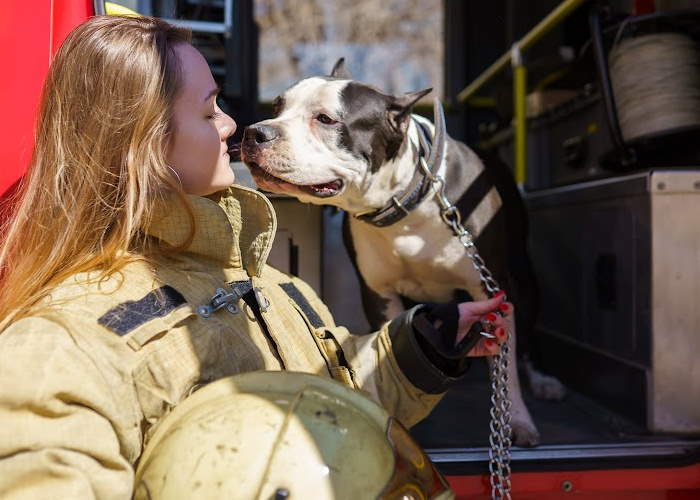
Protecting Your Dog: Kitchen Hazards
We all know that dogs shouldn’t eat chocolate or onions, but fewer of us intentionally create dog-safe kitchens. This is rather bizarre, as you wouldn’t dare risk cooking with materials that are hazardous to yourself or your loved ones.
You can create a dog-safe kitchen by installing child locks or latches on your pantry, and should always store toxic chemicals like cleaners in high places that your dog cannot reach.
Remember, too, that your dog will be curious to sniff about your trash. This is rather gross to us, but the garbage can smell enticing to them. So, be sure to invest in a pet-safe trash can, or install a cabinet that puts a barrier between your dog and the bin.
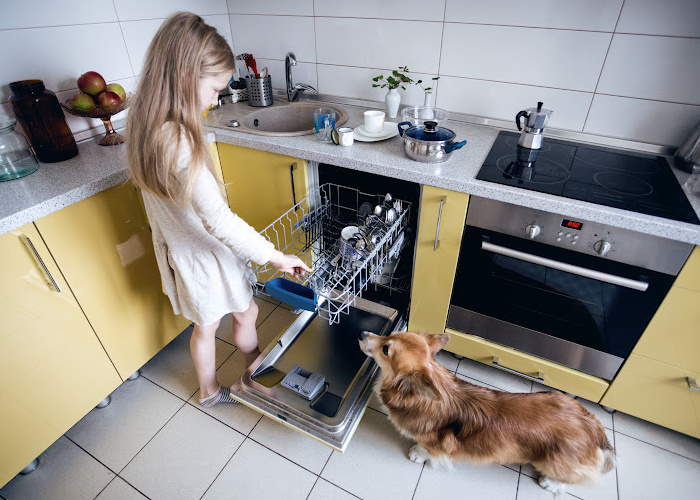
Fencing and Privacy
Unfortunately, dog theft happens. Around two million dogs are stolen every year in the US, and your chances of recovering a stolen dog are not good. It’s a desperately sad situation to be in, and one that we all wish to avoid.
Of course, you can’t live in complete suspicion of every stranger that passes your front door. However, you can create a private area in your yard for your pup to play. The way you create this private area really depends on the context of your yard space. But common design ideas include tall hedging, bamboo thickets, latticework, and potted plants. Just be sure they’re all non-toxic for pets.
Investing some time into landscaping your yard can turn a legitimate fear of dog theft into something beautiful — a landscaped, private outdoor area that both you and your dog can enjoy.
And, it goes without saying that leaving your dog outside unattended is not a good idea.
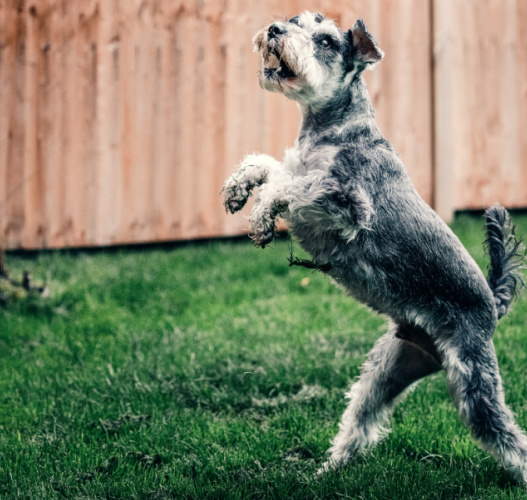
Conclusion: Protecting Your Dog
Modern life presents many challenges to dog owners. You have to watch out for all kinds of cables, wires, hazards, and toxins and need to be vigilant against the threat of dog theft.
However, all these challenges can easily be overcome with a little planning and preparation that ensures your dog stays safe while you focus on giving them a fun and full life.
Protecting Your Dog
Pin for future reference
Protecting Your Dog: Author Bio
Frankie Wallace is a frequent contributor to Small Dog Place. She is a freelance writer from Boise, Idaho. If her spirit animal could be anything, it would be a beagle--inquisitive, and always searching for food.
Other Articles By Frankie Wallace
Small Dog Obesity: Your Dog Isn't Chunky--It's Obese
The Benefits and Challenges of Having Pets in the Workplace
How to Guide Your Senior Dog Into Aging with Ease
How A Dog Can Promote Healthy Living
How to Care for Dogs with Sensitive Stomachs
How small dogs help cancer patients: Having a Small Dog Can Boost Positivity for Cancer Patients
The Intersection of Family Dogs and Family Health
About Janice (author and voice behind this site)
Janice Jones has lived with dogs and cats for most of her life and worked as a veterinary technician for over a decade. She has also been a small-breed dog breeder and rescue advocate and holds academic training in psychology, biology, nursing, and mental health counseling. Her work focuses on helping dog owners make informed, responsible decisions rooted in experience, education, and compassion.
When not writing, reading, or researching dog-related topics, she likes to spend time with her six Shih Tzu dogs, her husband, and her family, as well as knitting and crocheting. She is also the voice behind Miracle Shih Tzu and Smart-Knit-Crocheting
Does This Article Deserve Your Thumbs Up?
We always appreciate your support and encouragement. Your thumbs up means so much to us. Please like this article.
If you find this page or any page on Small Dog Place Helpful, or useful in anyway, I'd love it if you would click the small heart found on the bottom right of each page.
You can also share or bookmark this page -- just click on the:

Free Monthly Newsletter
Sign Up for Our Free Newsletter and get our Free Gift to You.
my E-book, The Top 10 Mistakes People Make When Choosing a Dog (and how to avoid them)
